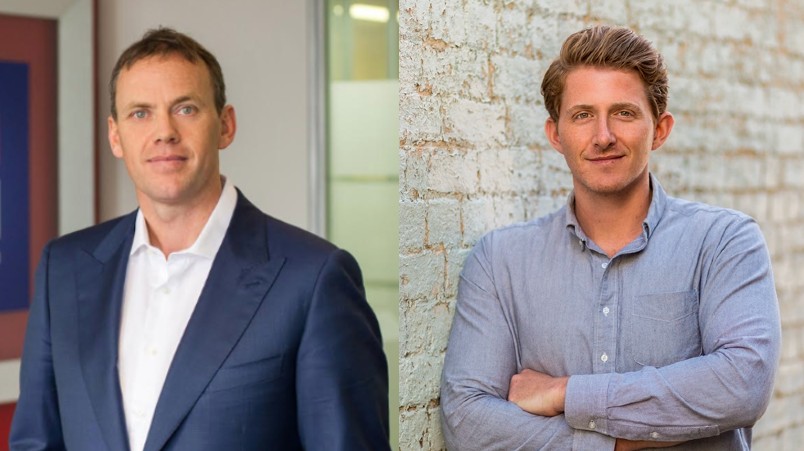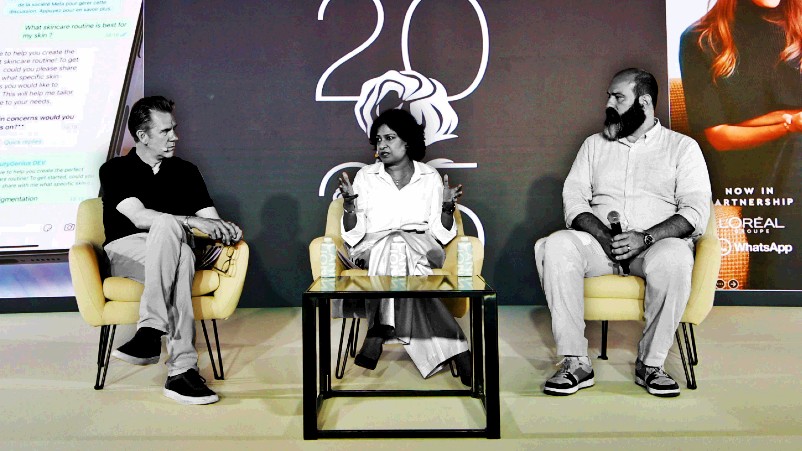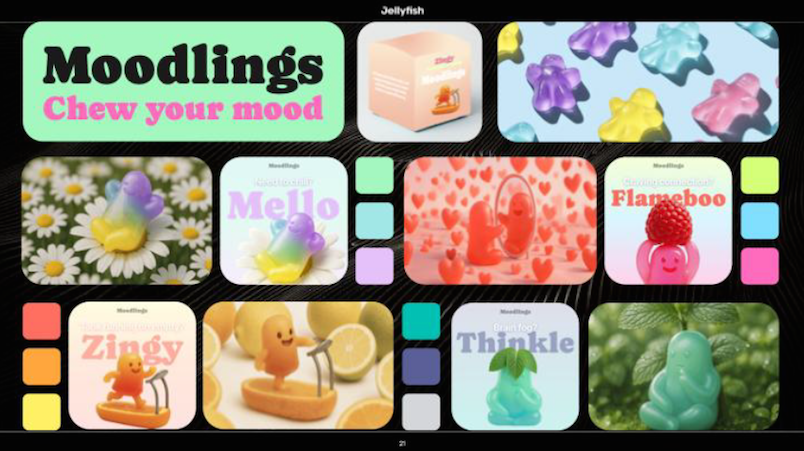The great digital ad price hike: Google and Facebook prices climb 1000% in some sectors, 45% on average
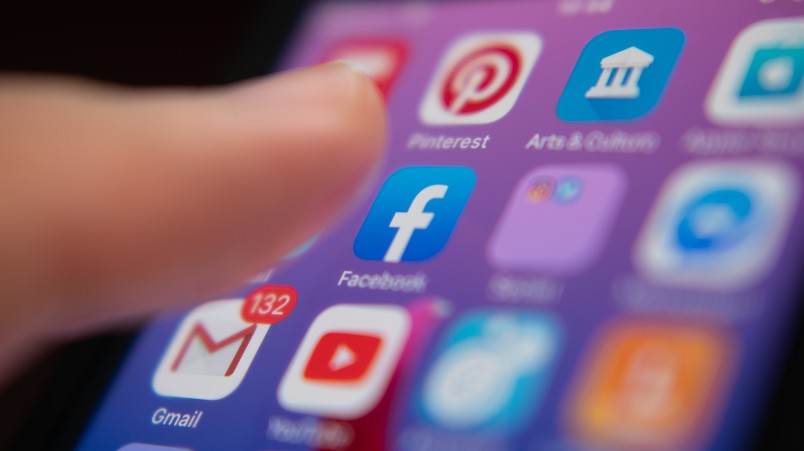
A series of reports published by US performance agency Tinuity reveal digital ad prices have risen dramatically over the past 12 months.
Digital ad prices in Australia - and globally - have soared over the past 18 months, as brands increased spending on Facebook and Google. One digital agency reported price hikes of 45 per cent on average – prices in sectors like retail and finance soaring. Another agency has seen some key search terms rising by 1,000 per cent. Digital experts unpack what's going on, and how Australia's marketers can avoid getting burnt.
What you need to know:
- Digital ad prices in Australia have increased substantially in some key sectors, driving average CPC and CPM hikes across Facebook, Google and having knock-on effects across other social platforms.
- There are far more businesses trying Facebook and Google, digital agencies say, but also moving up the funnel to drive awareness and consideration rather than conversions.
- Global ad prices for Facebook have risen 47 per cent on average, the platform says, which some local digital agencies say is pushing brands to try second tier platforms.
- Pinterest and Snapchat have seen the biggest price rises in the US, surging 163 per cent and 130 per cent respectively in the past year.
- Experts say a number of factors are at play: increased demand, Digital Services Taxes abroad, and Apple’s iOS changes, for starters.
We saw increased budgets, and therefore competition, across all digital platforms as retailers focused budgets away from traditional media.
The price of digital ads on Google Search and Facebook has soared over the past year, with some Australian agencies seeing almost 50 per cent rises on average.
Some costs-per-click (CPCs) for specific search terms have increased in price by more than 1,000 per cent in the 2021 financial year, while others have fallen. The price increases are most significant in specific, Covid-affected verticals.
“We’ve seen a fairly slow, but steady, increase in CPMs and CPCs across all major performance media channels,” Scott McCarthy, senior performance analyst at Alpha Digital, said.
"Comparing data across a range of advertisers and industries from the first half of this year, with the same period last year, we’ve seen an increase in costs of around 45 per cent - though this curve is starting to plateau."
Kaimera’s Chief Digital Officer, Trent McMillan, said exact match branded search term CPCs have increased by 81 per cent in the 2021 fiscal year compared to 2020.
“Breaking this down to a category level there are some interesting finds with news/entertainment seeing the largest increase - up 1,030 per cent year on year – whilst the retail and finance categories saw a 40 per cent and 38 per cent increase respectively,” McMillan said. “Conversely, only the alcohol category of the ones we analysed saw a reduction, dropping 9 per cent.”
CPMs on Facebook increased by 40 per cent and CPCs by up to 48 per cent, Dave Levett, Managing Director of Murmur, said. On Google Search and display, however, they had seen far smaller increases – and even falls on YouTube.
“Facebook's large increase in CPM is due to audience targeting and an increased investment by clients in the platforms, so you have more businesses entering the ads market, trying to target their ads to an increasingly more accurate audience,” per Levett.
Morris Bryant from Sparro said while CPCs have definitely increased, the “floor really fell out last year – particularly in key categories. So there’s both a CPC increase and a recovery.”
Google’s advertising revenue in Australia increased by 12 per cent [last year]. Considering that travel advertising is all but dead there must be a large amount of growth and cost increases happening elsewhere.
But why have ads been rising?
An increase in spend, demand, and a push to drive brand awareness over conversions were the key drivers of digital ad price rises, digital agency leads said.
“We saw increased budgets, and therefore competition, across all digital platforms as retailers focused budgets away from traditional media like OOH towards digital platforms, especially the performance focused Google, Facebook, YouTube, and Pinterest,” Kat Willox, General Manager of Impressive, said.
“Retailers capitalised on increasing screen time during lockdown, as it was easily the best way to get in front of their audience during the pandemic. Higher online ROI during the pandemic meant that e-commerce businesses were happier to pay higher ad prices and capitalise on scale while they were seeing strong purchasing behaviour.”
Gary Nissim, Managing Director of Indago Digital, said specific verticals were vying for increased market share.
“It’s important to note that search marketing works like an auction. Like any auction, if demand increases (advertisers) or supply drops (customers), then price (CPCs) increase,” he said.
“I do however suggest that costs must be increasing for the main reason that in 2020, Google’s advertising revenue in Australia increased by 12 per cent. Considering that travel advertising is all but dead there must be a large amount of growth and cost increases happening elsewhere. I just don’t think that Indago’s client base sits in those verticals.”
Bryant said Sparro, one of Australia’s largest Google Ads agencies by spend, has seen an “incredible” surge in YouTube spend – in the thousands of per cent year-on-year – as well as a move towards Facebook awareness campaigns.
“The biggest trend has been in businesses that have been historically performance-led ’growing up’ the funnel,” he said. “There's a real need to say something to the market and grow brands – rather than ‘we're here’ type bottom of the funnel marketing.”
Half Dome Managing Partner Joe Frazer agreed: "The hidden statistic in my mind is how this is inordinately impacting ad formats and buying strategies that are reserved for more upper funnel marketing tactics. Research from Skai, which provides a data driven set of products that analyse price changes in the market, indicate that whilst CPMs across the board are on the increase (41 per cent in Q2 YOY) this is exacerbated for activity driving brand awareness, traffic or reach (62 per cent YOY)."
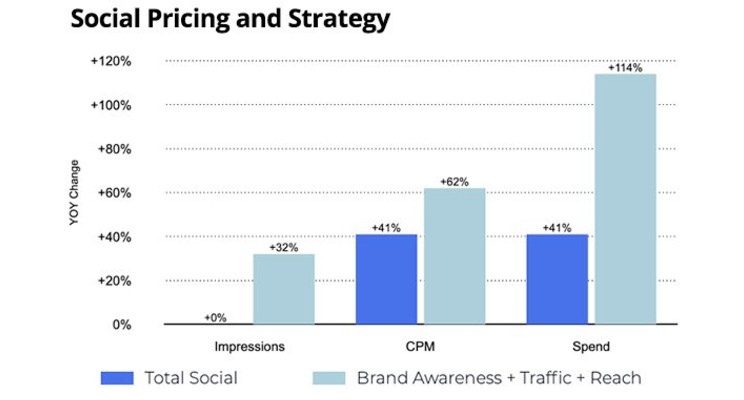
We are definitely seeing brands starting to shift spend to other platforms to achieve more efficiency or to test and learn with newer platforms like TikTok.
Price hikes higher abroad
In the US, price hikes were in some cases even more pronounced. Tinuiti, a US-based performance agency that controls $2 billion in ad spend, says Google’s CPCs jumped 36 per cent and YouTube costs-per-thousand-views (CPM) were up 35 per cent to the end of Q2 2021.
Facebook noted in its quarterly results that ad prices had risen 47 per cent over the past year, while in May, Bloomberg reported that Amazon’s ad prices had increased by more than 50 per cent year-on-year.
Interestingly, Tinuiti, which publishes three reports covering Amazon, Facebook and Google, noted that Pinterest and Snapchat CPMs are up 163 per cent and 130 per cent respectively.
Local social and performance agencies say while investment on Facebook has increased during Covid, its overall share of the social market is decreasing as brands turn to or experiment with second tier platforms like Snapchat, TikTok and Pinterest.
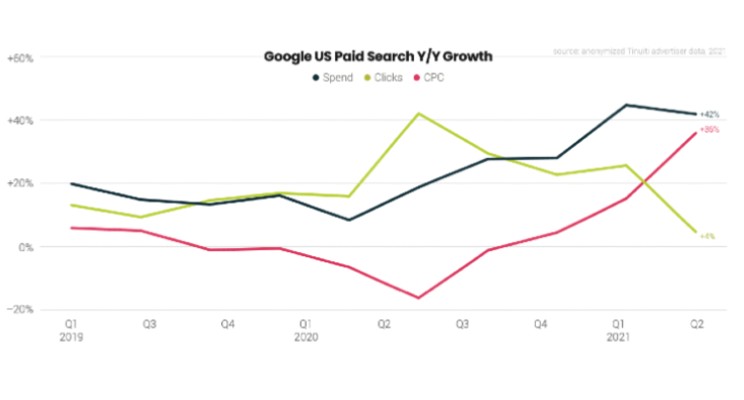
Prices prompting some brands to re-think their social mix
“We had a discussion literally over the weekend with a client in the financial services space. Their products appeal to a certain audience, in a certain geographical area, and when you run these activities… you exhaust the audience,” John Vlasakakis from Next&Co said.
If price rises continue, he thinks “people [will start to say] ‘I can't invest any more money in Facebook - it's too expensive’. It's how Facebook got market share many years ago. Google got too expensive, then people start advertising on Facebook.”
A new round of lockdowns around the country has prompted more money to flow to digital platforms, Suzie Shaw, Managing Director of We Are Social, said.
“Overall, we’ve actually seen an increase in the level of investment in Facebook over the last year,” she said. “At a time when a number of other media channels, like cinema, OOH and experiential are soft or off the table altogether… it’s no surprise the rates are increasing.”
But she agrees Facebook’s share of spend has decreased. “We are definitely seeing brands starting to shift spend to other platforms to achieve more efficiency or to test and learn with newer platforms like TikTok.”
Philip Pollock, Chief Operating Officer at Omnicom Media Group’s Resolution Digital said it has not yet seen budgets shift away from Facebook. The platform faces headwinds, however, which it flagged in its results presentation last month.
“My interpretation of ‘headwinds’, was [Facebook] specifically calling out the impact and implications of the Digital Services Tax,” Pollock said.
“Also further regulation through the current enquiries in many jurisdictions, and what the impact of stimulus coming to an end have – as well as iOS changes.”
Pollock said advertisers are asking a lot of questions and comparing spend and performance over time. Following Apple's changes, the ability for advertisers to re-target audiences is becoming more difficult, and Facebook's attribution tools have also been negatively hit.
Will that drive further market shifts? “Everybody is still on the wait and see,” said Pollock.


